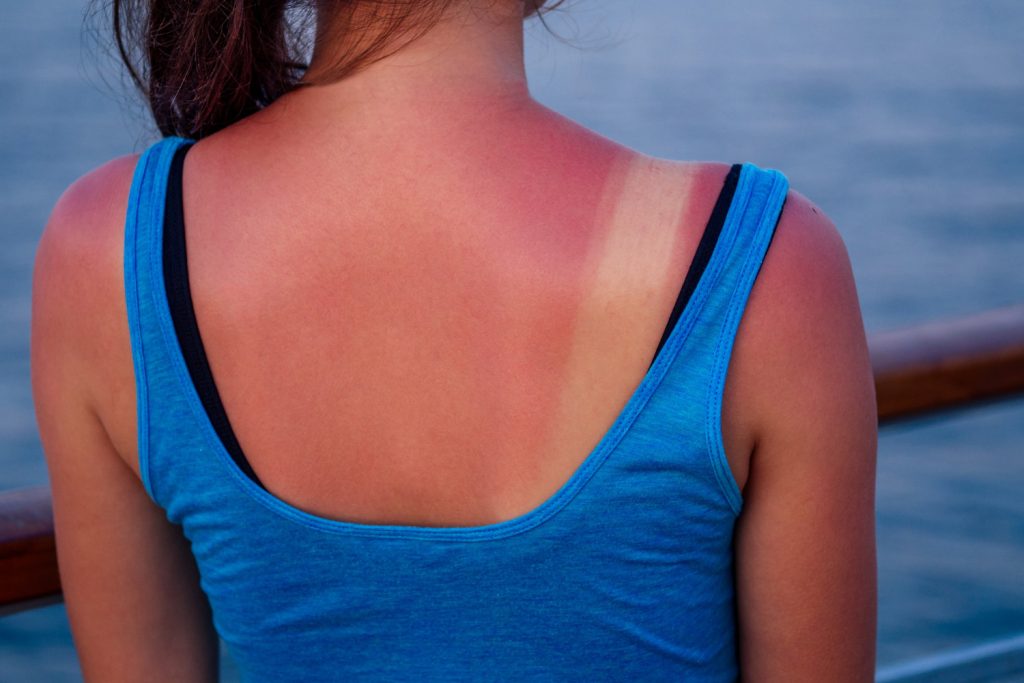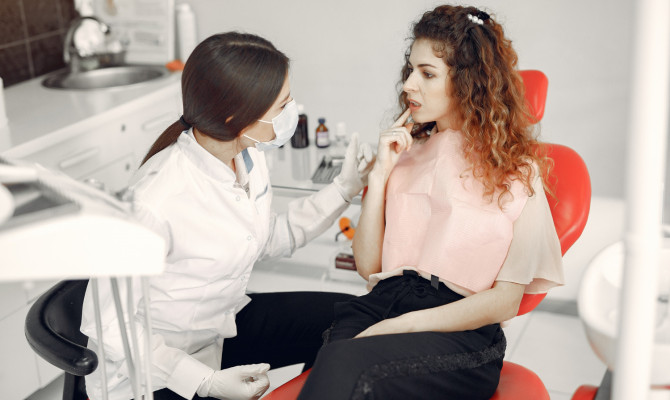Tanning Bed Rash: Symptoms & Management

- Dermatitis
- 09 Oct 2023
Introduction
Tanning Bed Rash
Tanning bed rash, an unwelcome consequence of indoor tanning, is a dark reminder that beauty can come at a cost as individuals seek that sun-kissed glow all year round. They often turn to tanning beds for a quick and convenient tan. However, the allure of bronzed skin lies in the potential for an uncomfortable and unsightly skin condition known as standing bed rash.

In this article, we delve into the world of tanning bird dash, exploring its causes, symptoms, and potential long-term effects, all aimed at helping you make informed decisions about your tanning choices. Whether you are a season tanning enthusiast or someone considering indoor tanning for the first time, understanding tanning bed rash is essential for maintaining the health and beauty of your skin.
What is tanning bed rash?
It is also known as photosensitivity dermatitis or simply tanning rash. It is a skin condition characterized by redness, itching, and sometimes blistering or hives that develop shortly after exposure to UV radiation from tanning beds or Sun lamps. This rash typically appears on the skin areas exposed to UV rays during the tanning session. 1 Introduction | Researched based study from National Institutes of Health
Symptoms
Symptoms of Tanning Bed Rash
- Redness
- Itching
- Burning sensation
- Bumps or hives
- Peeling skin
- Swelling
- Pain
- Skin sensitivity
- Rash distribution
Tanning bed rest can present a range of symptoms, varying in intensity from mild to severe. The most common ones include:
Redness
- The affected skin areas typically become red and inflamed shortly after UV exposure.
Itching
- A defining symptom is itchy skin, which can range in severity from mild to extreme.
Burning sensation
- On their skin, some people may feel a scorching or stinging sensation.
Bumps or hives
- Raised bumps and blisters may develop on the skin, particularly in more severe cases or with certain types of tanning bed rash.
Peeling skin
- The skin may peel after the initial rash subsides, resembling a sunburn.
Swelling
- The affected areas can be swelled, making the skin feel tight or puffy.
Pain
- It may sometimes be associated with discomfort or pain, primarily if blistering occurs.
Skin sensitivity
- The skin could feel tender and more sensitive to touch.
Rash distribution
- The rest typically appears on the body’s parts exposed to UV radiation, such as the face, neck, arms, and legs. 2 Symptoms | Researched based study from National Institutes of Health , 3 Symptoms | Researched based study from National Institutes of Health
Causes
Causes of Tanning Bed Rash
- UV exposure
- Sensitive skin
- Lack of protective measures
- Overexposure
- Medications
- Frequent tanning sessions
It is primarily caused by exposure to UV radiation. It can trigger reactions in some people, leading to the development of the rash. Here are the fundamental causes and risk factors associated with it:
UV radiation exposure
- The primary cause is the overexposure of the skin to UV radiation. Tanning beds emit UVA and UVB rays, which can lead to skin damage and rash development, particularly in people with sensitive skin.
Skin sensitivity
- Not everyone’s skin reacts the same way to UV radiation. People with fair or sensitive skin are generally at a higher risk of developing it than those with darker skin tones.
- People with a history of Sunburns or skin conditions like Eczema may be at higher risk.
Lack of protective measure
- Failure to use protective measures such as goggles and appropriate tanning lotions can increase the risk. Goggles can protect the eyes from UV exposure, while a suitable cream can help reduce irritation.
Overexposure
- Spending too much time in a tanning bed, especially during a single session, can increase the risk of skin damage and rash development.
Medications and cosmetics
- The skin can become more sensitive from some drugs and cosmetics. When taking any medications or using skin care products, it is essential to check if they have photo-toxic or photosensitive effects.
Frequency of tanning
- Frequent indoor tanning sessions can increase UV exposure and the risk of developing a rash. 1 Causes| Researched based study from National Institutes of Health
Types
Types of Tanning Bed Rash
Irritant contact dermatitis
- It is the most common type, which occurs when the skin is exposed to returns in tanning lotions, disinfectants used on tanning bed surfaces, or excessive sweating during the sessions. The rash often resembles a mild to moderate sunburn.
Allergic contact dermatitis
- It occurs when an individual is allergic to specific chemicals or substances found in lotions, moisturizers, or other products applied to the skin before tanning.
- This type of rash presents as redness, itching, swelling, and sometimes blisters in the areas where the allergen has come into contact with the skin.
- To prevent this, people should carefully read the ingredient labels of tanning products and avoid those containing known allergens. Patch testing may be necessary for those with sensitive skin.
Polymorphic light eruption (PMLE)
- It is a less common but more severe type of rash due to an abnormal reaction to UV radiation, particularly UVA rays. PMLE is more likely to affect people not exposed to UV radiation for some time.
- It involves gradually acclimating the skin to UV radiation through shorter tanning sessions and using a broad-spectrum sunscreen with a high SPF. Protective clothing and avoiding peak hours can also help prevent it. 4 Types | Researched based study from National Institutes of Health ,5 Types| Researched based study from National Institutes of Health ,6 Types | Researched based study from National Institutes of Health
Management
Management of Tanning Bed Rash
How do you Get Rid of Tanning Bed Rash?
Home Remedies:
Cool compress
- Applying a cool, damp cloth or compressing the affected areas can help relieve itching and reduce redness and inflammation.
- Aloe vera gel obtained from the plant leaves has soothing properties and can relieve the discomfort associated with the rash.
Hydration
- Water consumption in large amounts can help skin recuperate and reduce dryness.
Limit your exposure to the sun.
- To allow the skin to heal, avoiding additional UV exposure, whether from tanning beds or natural sunlight, is crucial. 8 Management | Researched based study from National Institutes of Health
Over-the-counter Creams:
Hydrocortisone cream
- Hydrocortisone creams purchased over the counter can help lessen the related itching and inflammation. Follow the product instructions for safe use.
Calamine lotion
- Calamine lotion has a calming effect on the skin and can reduce irritation. As advised, apply it to the affected area.
Antihistamines
- Antihistamines taken orally can aid with itching and discomfort. Consult a healthcare professional or pharmacist for suitable options. 7 Management | Researched based study from National Institutes of Health
Medical Treatments:
Prescription medications
- In severe cases, mainly if caused by a polymorphic light eruption or persistent symptoms, a dermatologist may prescribe more potent topical corticosteroids or oral corticosteroids to reduce inflammation and itching.
Phototherapy
- Dermatologists may advise phototherapy for PMLE, which gradually desensitizes the skin through controlled UV exposure under medical supervision.
Emollients and moisturizers
- Emollients and moisturizers of a medical grade can hydrate the skin and aid in healing.
Treatment for secondary infections
- If blisters are open-source developed and infected, antibiotics or antifungal medications may be prescribed. 7 Management | Researched based study from National Institutes of Health
Complications
Complications of Tanning Bed Rash
Risks of unresolved tanning bed rash:
Secondary infections
- If the skin is broken or blisters formed due to the rash, there is a risk of secondary bacterial or fungal infections. These can version the condition and may require additional treatment.
Hyperpigmentation
- Some people may experience lasting changes in skin pigmentation in the areas affected by the rash. Patches of skin that are lighter or darker as a result may be visually unappealing.
Scarring
- In severe cases, it can lead to scarring. This is more likely to occur when blisters or open source are present and not adequately treated.
Increase sensitivity
- It can make the skin more sensitive to UV radiation. Subsequent exposure to UV rays, whether from tanning beds or sunlight, can lead to more severe skin reactions. 1 Complications | Researched based study from National Institutes of Health , 2 Complications | Researched based study from National Institutes of Health
Connection to skin cancer:
While it is not a direct cause of skin cancer, using tanning beds is associated with an increased risk of skin cancer, including melanoma, basal cell carcinoma, and squamous cell carcinoma. Here is how tanning bed use and skin cancer are connected:
UV exposure
- Tanning beds emit UV radiation, which damages the DNA in skin cells. Long-term or recurrent exposure raises the possibility of DNA alterations, which over time may result in the growth of skin cancer.
Cumulative damage
- The more a person uses tanning beds, the greater the cumulative UV damage to the skin. This damage accumulates over years and can eventually lead to skin cancer.
Younger onset
- Its use, particularly among young people, has been linked to an earlier onset of skin cancer. Skin cancer is more aggressive when it occurs in younger individuals.
Melanoma risk
- The use of tanning beds dramatically raises the risk of melanoma, the most lethal form of skin cancer. Tanning bed use before the age of 35 has been linked to an increased risk of melanoma, according to studies. 9 Complications | Researched based study from National Institutes of Health
FAQs
Frequently Asked Questions About Tanning Bed Rash
Q. Does tanning rash go away?
- Yes, it can go away with time and appropriate care. The resolution duration depends on its severity and the specific type of rash.
Q. Does tanned skin return to normal?
- Tanned skin will naturally return to its standard untamed color over time as your skin sheds its outermost layer of cells.
- This process is part of the skin’s natural regeneration cycle, and it typically occurs within a few weeks to a month after UV exposure has stopped.
- If you have a relatively light tan from a short period of sun exposure or indoor tanning, your skin may return to its standard color within a week or two after avoiding the exposure.
Q. Can I use coconut oil in a tanning bed?
- Using coconut oil is generally not recommended. While it has some natural Sun protective properties due to its low SPF, it may not provide adequate protection against the intense UV radiation emitted by tanning beds.
- Using it on your skin might give a false sense of safety in a tanning bed. People may think they can stay longer in the tanning bed, increasing the risk of overexposure and skin damage.
- Some people may have skin sensitive to coconut oil or other ingredients, which could lead to irritation or an allergic reaction.
Q. Do I need a lotion for the tanning bed?
- While you don’t need a lotion, using a tanning lotion specifically designed for dining can offer several benefits, like moisturization, acceleration of the tanning process, and vitamins and antioxidants to protect your skin.
- If you decide to use a tanning lotion, it’s crucial to pick one made especially for tanning beds. Regular sunscreen products are unsuitable and may contain ingredients that can damage tanning bed acrylics.
Any feedback on this article?
 This Articles content was accurate
This Articles content was accurate Very Informative Article
Very Informative Article I have a question or a comment
I have a question or a comment
 This article contains inaccurate content
This article contains inaccurate content This article was not helpful
This article was not helpful I have a question or a comment
I have a question or a comment
We appreciate your helpful feedback!
Checkout our social pages
References
-
National Institutes of Health
Introduction | Causes | Complications
-
National Institutes of Health
Symptoms | Complications
-
National Institutes of Health
Symptoms
-
National Institutes of Health
Types
-
National Institutes of Health
Types
-
National Institutes of Health
Types
-
National Institutes of Health
Management
-
National Institutes of Health
Management
-
National Institutes of Health
Complications






































